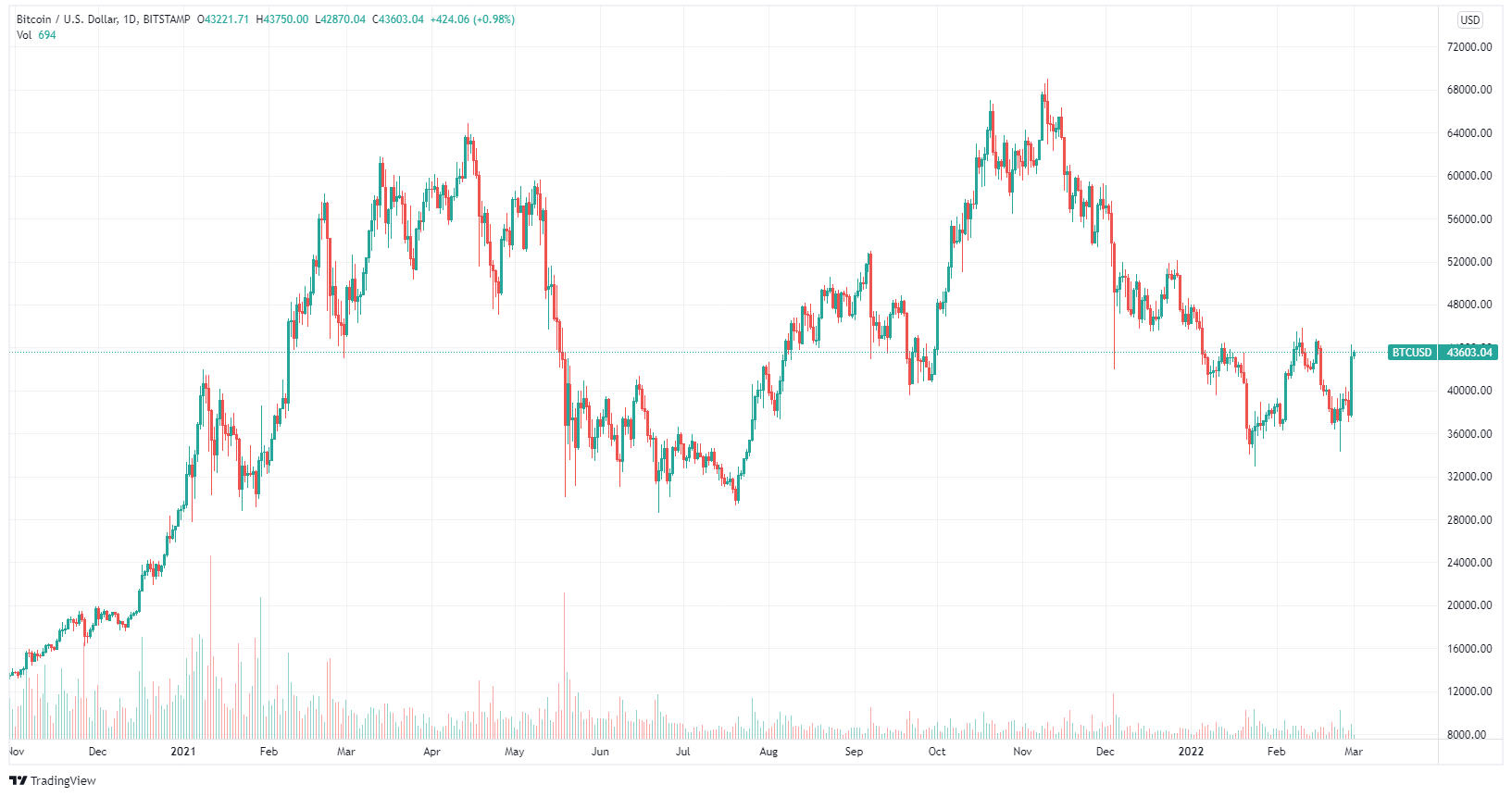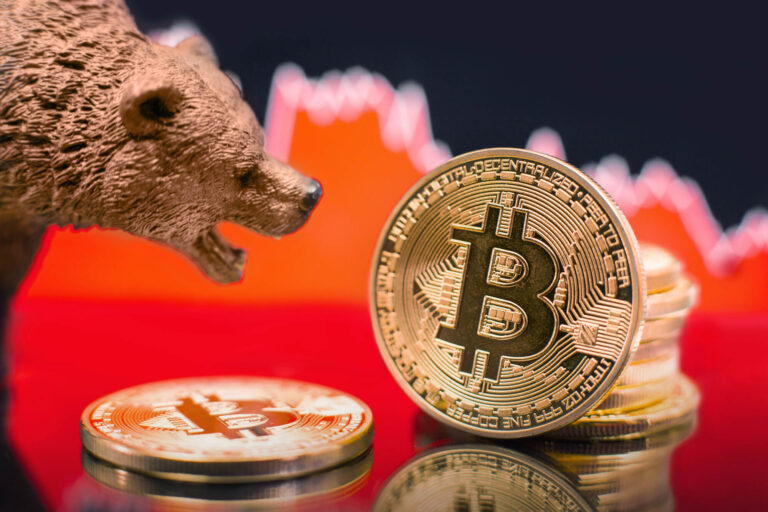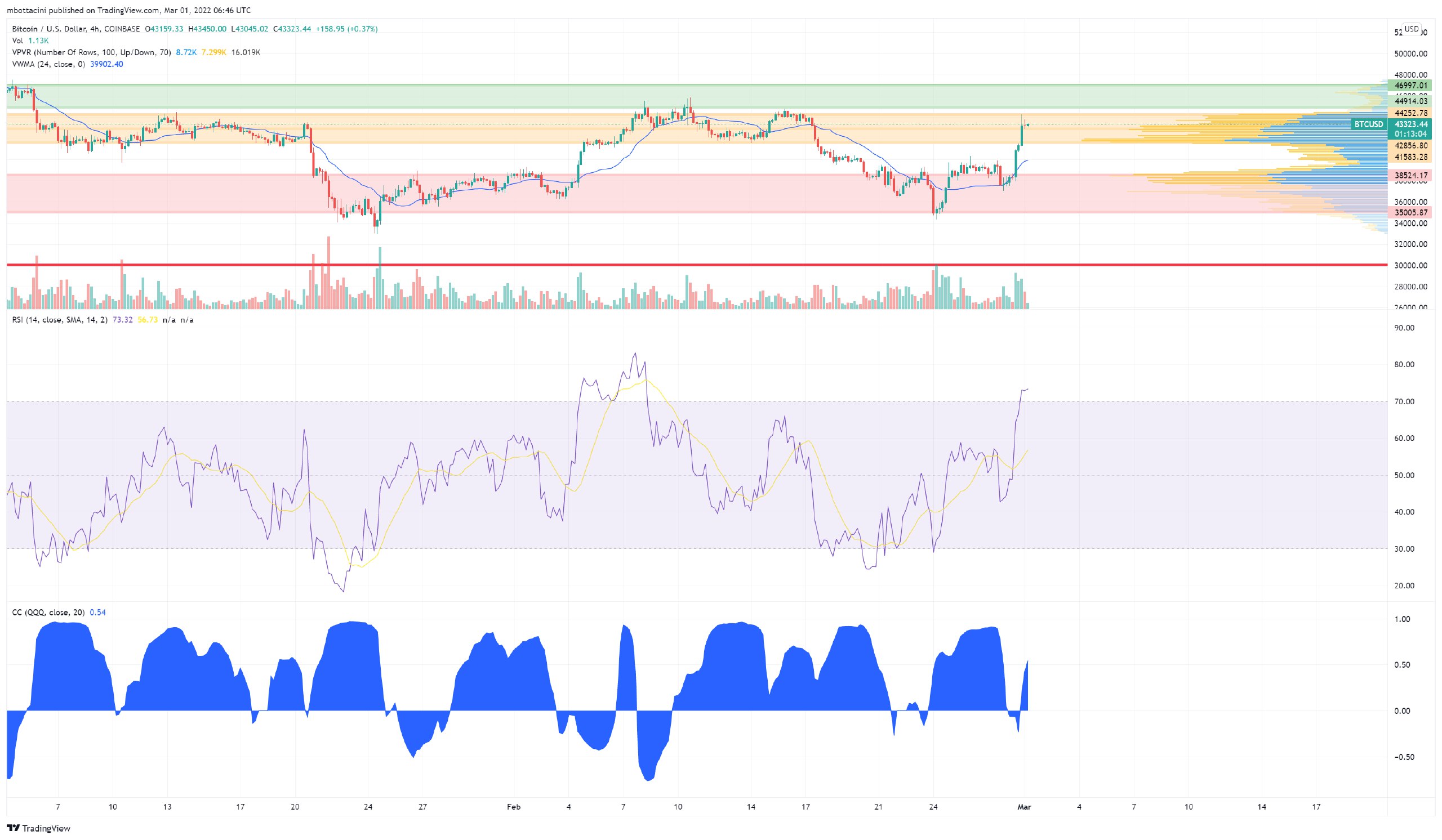Good Morning!
What is the safer (or better) investment right now? FIAT (USD, CHF, SGD, etc.), government bonds, precious metals, stocks, or cryptocurrencies? Historically, war-related sales have been great buying opportunities.

Returns after historical invasions
During the Vietnam War (1964), the Gulf War (1991), the Iraq War (2003), and the Crimean Crisis (2014), markets recorded positive returns for 3-6 months after the invasions. Then again, during the war in Afghanistan (2001), the markets saw a chaotic three months before resuming the bearish trend, finally breaking below the post-invasion lows.
The scenario at that time:
- Markets had been under pressure from dot-coms deleveraging
- Stagflation prevention with inflation at a ten-year high of 3.5%
Today, we see during the Russian-Ukrainian conflict:
- Nasdaq down by 14.22% from the all-time high in November 2021
- Highest inflation in 40 years: 7.5%
- Energy costs on the rise: Brent $100 (5-years high: +78%), Natural gas $4.38 (+58% in 5 years), Palladium $2,510 (+253% in 5 years), etc.
- Concerns about Covid-19
A key difference is that during the war in Afghanistan, interest rates were at 6.5%, and this gave the Fed the ability to lower rates down to 1%.
The Fed's future plans
Interest rates are now 0.25%: they can only go up and the Fed's balance sheet can only fall from here. In the short term, the events that will cause volatility to increase are as follows:
- March 10: US CPI release
- March 16: FOMC rate decision (moderate: 25bps, aggressive: 50bps)
In the medium term, the framework will be guided by:
- The path and level of the Fed's terminal rate
- Potential Fed QT (Quantitative Tightening) program coming soon
- Regulation and West/East relations
Government bonds and the fear of rising interest rates make it difficult to think of them as "risk-free" (for most countries). While currencies such as the Swiss Franc continue to be a stable safe haven, it is difficult to understand crypto's future. SWIFT bank sanctions on Russia could result in an upside for crypto as they are an alternative to FIAT systems (especially BTC, instead of ETH). At the same time, Western governments can simultaneously stigmatise cryptocurrencies by trying to ban transactions.
Technical picture
At the time of writing, Bitcoin (BTC) is trading at $43,300 (+13.08% in 7 days), Ethereum (ETH) is trading at $2,900 (+10.3% in 7 days), the ETH/BTC spread is trading at 0.06713 (-2.71% in 7 days) and Solana (SOL) is trading at $96.2 (+11.3% in 7 days). BTC hit a low of $34,500, and ETH hit $2,300 when the Russo-Ukrainian war was declared, but then started recovering quickly.
Realised volatility is increasing across the entire cryptocurrency market, and both BTC and ETH are at the 75th percentile: this week has been a good deal for volatility buyers. I believe there is no reason to think that the volatility episode is over. Both BTC and ETH short-term and long-term futures are now trading in a restricted contango on CME (this week, the short term switched from contango to backwardation and back three times). Similarly, the three-month BTC Futures Annualised Rolling Basis on Binance are trading at 2.4% Premium, after hitting an all-time low on February 28: +0.94%.
Options dynamics
The Implied Volatility term structure of BTC reacted strongly to the events of this week, with the front end trading +20 vol in 28 days and the back end remaining nearly identical with a high Vol of Vol environment (Vol of Vol of BTC: 120%). On the BTC skew side, the short-term risk reversal is trading at +10% versus put, and the long-term risk reversal at +6% volatility premium versus put.
I personally think the market is underestimating the likelihood of a rally to the upside (in the medium/long run) and is also actually positioned on the bearish side. I will not be surprised by a BTC +20k and an underperforming ETH. In a bearish/consolidation scenario, I expect ETH to underperform BTC, so a break of the support of 0.065 ETH/BTC could be the signal for a major rotation towards BTC. Then again, a complete break of the 0.074 ETH/BTC resistance will be a bullish signal.
Happy Trading!
All intellectual property, proprietary and other rights and interests in this publication and the subject matter hereof are owned by Crypto Broker AG including, without limitation, all registered design, copyright, trademark and service mark rights.
Disclaimer
This publication provided by Crypto Broker AG, a corporate entity registered under Swiss law, is published for information purposes only. This publication shall not constitute any investment advice respectively does not constitute an offer, solicitation or recommendation to acquire or dispose of any investment or to engage in any other transaction. This publication is not intended for solicitation purposes but only for use as general information. All descriptions, examples and calculations contained in this publication are for illustrative purposes only. While reasonable care has been taken in the preparation of this publication to provide details that are accurate and not misleading at the time of publication, Crypto Broker AG (a) does not make any representations or warranties regarding the information contained herein, whether express or implied, including without limitation any implied warranty of merchantability or fitness for a particular purpose or any warranty with respect to the accuracy, correctness, quality, completeness or timeliness of such information, and (b) shall not be responsible or liable for any third party’s use of any information contained herein under any circumstances, including, without limitation, in connection with actual trading or otherwise or for any errors or omissions contained in this publication.
Risk disclosure
Investments in virtual currencies are high-risk investments with the risk of total loss of the investment and you should not invest in virtual currencies unless you understand and can bear the risks involved with such investments. No information provided in this publication shall constitute investment advice. Crypto Broker AG excludes its liability for any losses arising from the use of, or reliance on, information provided in this publication.






